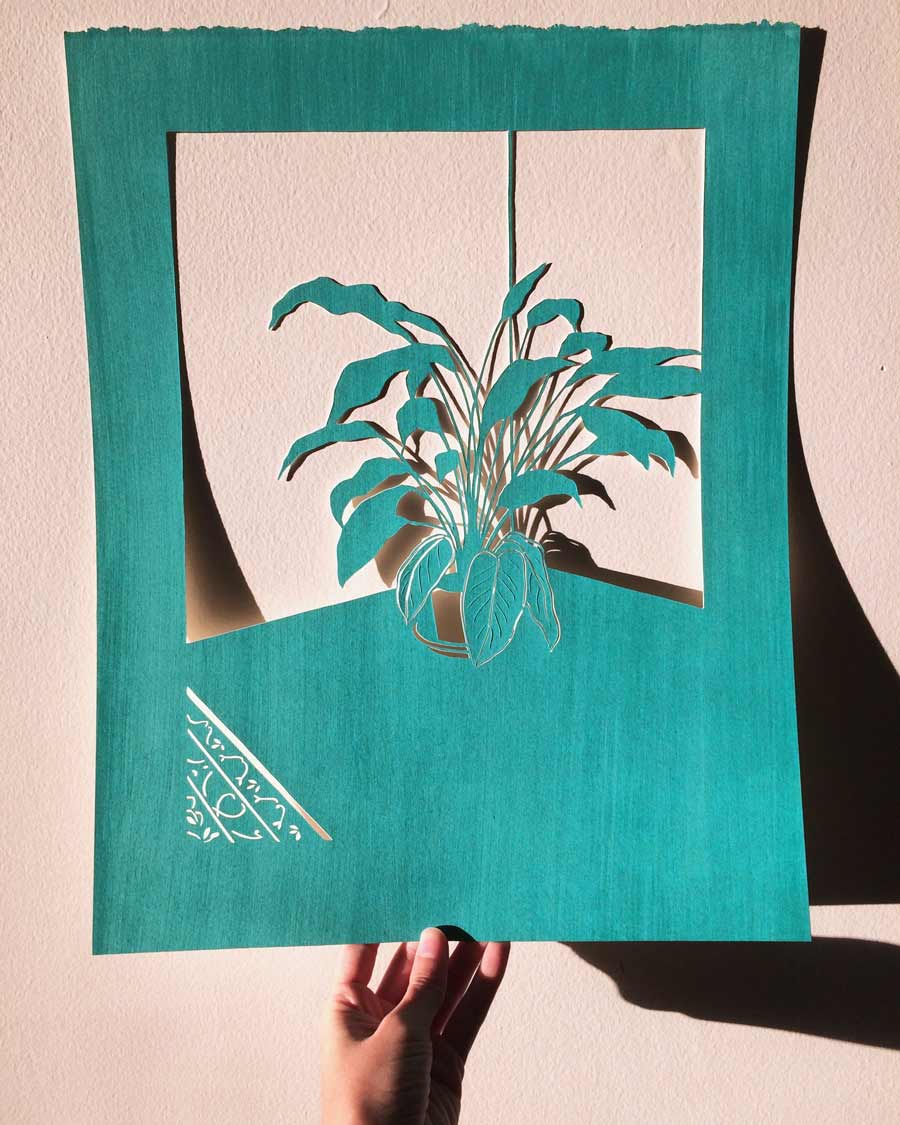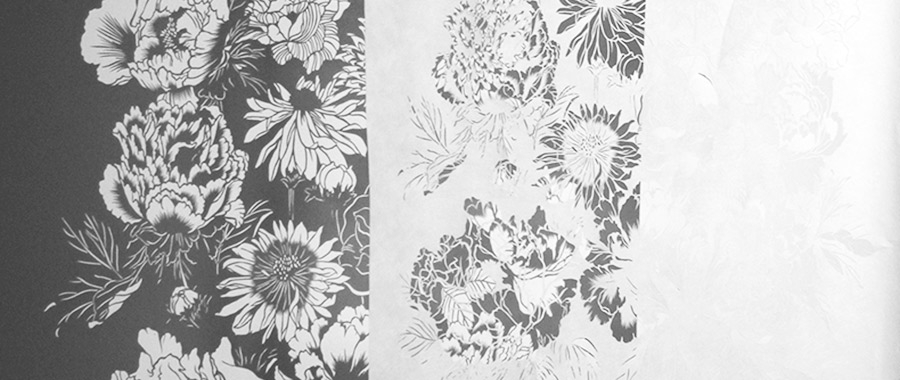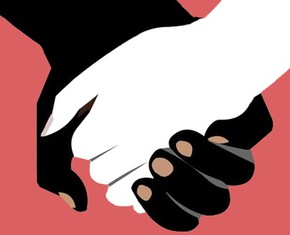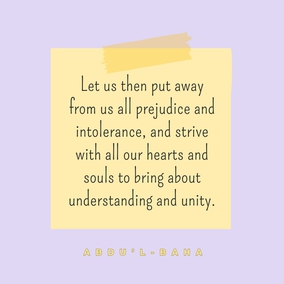The views expressed in our content reflect individual perspectives and do not represent the authoritative views of the Baha'i Faith.
How can cutting paper serve humanity? In part two of BahaiTeachings.org’s interview with artist Josefina Hernandez, we learn how—and why.
Exploring Josefina’s spiritual and creative approach to the medium of paper cutting also tells us how the Baha’i Faith informs her work and her community building efforts—and how she believes art can contribute to social transformation.
Q: How does your relationship with Baha’u’llah and the teachings of the Baha’i Faith inform your creative practice and guide your work? Do you feel that your art practice brings you closer to Baha’u’llah?
A: Baha’u’llah has exalted work to the station of worship. I believe that by following my calling and striving to perfect my art and skills I am able to grow closer to God:
It is enjoined upon every one of you to engage in some form of occupation, such as crafts, trades and the like. We have graciously exalted your engagement in such work to the rank of worship unto God, the True One. Ponder ye in your hearts the grace and the blessings of God and render thanks unto Him at eventide and at dawn. Waste not your time in idleness and sloth. Occupy yourselves with that which profiteth yourselves and others. – Baha’u’llah, The Most Holy Book, p. 26.
Q: Are there any particular quotes from the Baha’i writings that inspire your work?
 A: Much of the inspiration in my work comes from the organic shapes of nature and its unassuming but yet perfect beauty. There is a quote from Baha’u’llah that has stayed with me ever since I first read it. It is shared in a narrative by Abdu’l-Baha:
A: Much of the inspiration in my work comes from the organic shapes of nature and its unassuming but yet perfect beauty. There is a quote from Baha’u’llah that has stayed with me ever since I first read it. It is shared in a narrative by Abdu’l-Baha:
Baha’u’llah loved the beauty and verdure of the country. One day He passed the remark: “I have not gazed on verdure for nine years. The country is the world of the soul, the city is the world of bodies.” – quoted by J. E. Esslemont in Baha’u’llah and the New Era, p. 35.
The last bit of this quote resonates with me deeply. In my work, nature has come to symbolize our spiritual reality, juxtaposed by architectural forms which symbolize our material existence in this plane of reality.
Q: You’ve devoted much of your time to serving as both an animator of the Junior Youth Spiritual Empowerment Program in Toronto and as a tutor of the Ruhi Institute in your neighbourhood in uptown Manhattan. How have you been able to bring your art practice through your service to the community?
A: In my service with the Junior Youth Spiritual Empowerment program in Toronto I was able to incorporate the arts into service projects and some of the lessons. One week, we held a still life drawing class after exploring the theme of excellence.
While serving as a tutor in NYC, we’ve been able to incorporate the arts into our study circle by making books with the participants where we write and decorate the quotes and prayers we are working on memorizing. We are also hosting a weekly devotional where we incorporate the arts as a means of understanding and expressing our thoughts on the themes we’re exploring.
At a number of neighborhood Holy Day celebrations, including the Bicentenary of Baha’u’llah, I was able to incorporate collage and paper art into a children’s activity that reflected on quotes and themes shared in the program.
Q: Has your service to the community given your artistic work more meaning? How so?
A: Yes, it has given me more meaning in the sense that whether I am serving or whether I am sitting down in my studio working, I am worshiping God. Realizing that different aspects of my life that are seemingly separate are actually interconnected and feed one another, has helped me to live a more coherent lifestyle. They are all part of a continuous path where I endeavor daily to put the teachings of Baha’u’llah into deeds in every aspect of my life, including my work as an artist.
Q: How has the community you live and serve in informed your creative practice?
A: I live in Washington Heights, New York City, a predominantly Dominican and immigrant neighborhood. It is lively, loud, busy, colourful, and unapologetically Latin. Living and serving in this neighborhood has inspired me and allowed me to learn alongside different kinds of people. My aesthetic sensibilities have expanded, and I’ve been able to appreciate different expressions of beauty.
Q: Your husband Reza is also an artist, how do you feel you support one another to progress creatively and spiritually?
A: Both being artists, we are able to give each other the space and support we need to create. We’ve learned to allow for moments of silence where we are able to work side by side, each focused on our craft. We are lucky because we truly appreciate and admire the work and effort that goes into the creative process.
In our marriage, we endeavor to keep the Baha’i Faith and service to our community as the center around which all of our efforts revolve—each day striving to grow closer to God and thus to each other.
Q: How do you strive for excellence in your work?
A: I think about excellence in relation to skill and doing the absolute best we can with what we have. With each new piece of work I create, I push my limits and slowly gather experience and new techniques to refine my craft.
This quote from the Bab framed this concept for me:
Whoever possesseth power over anything must elevate it to its uttermost perfection that it not be deprived of its own paradise. For example, the paradise of a sheet of paper on which a few excellent lines are inscribed is that it be refined with patterns of gold illumination, adornment, and excellence that are customary for the most exalted parchment scrolls. Then the possessor of that paper hath elevated it to its utmost degree of glory. Should he know of a higher degree of refinement and fail to manifest it upon that paper, he would deprive it of its paradise, and he would be held accountable, for why hast thou, despite the possession of the means, withheld the effusion of grace and favour? – The Bab, from the Persian Bayan, provisionally translated by Nader Saiedi in The Gate of the Heart, p. 255.
Q: How do you believe that the state of craftsmanship has been elevated in this dispensation?
A: This quote by Abdu’l-Baha says it all:
O thou servant of the One true God! In this universal dispensation man’s wondrous craftsmanship is reckoned as worship of the Resplendent Beauty. Consider what a bounty and blessing it is that craftsmanship is regarded as worship. In former times, it was believed that such skills were tantamount to ignorance, if not a misfortune, hindering man from drawing nigh unto God. Now consider how His infinite bestowals and abundant favors have changed hellfire into blissful paradise, and a heap of dark dust into a luminous garden. – Abdu’l-Baha, Selections from the writings of Abdu’l-Baha, p. 145.
Q: In your opinion, how do you believe that art can contribute to community building and social transformation?
A: Art has the power to inspire the soul. Through the arts, communities have been able to express, challenge, and empower themselves generation after generation. Our souls are inherently attracted to beauty and justice, and I think through the arts we can create change that stems from the heart and has the power to build communities anew.
Q: Thanks so much for answering these questions, do you have any exciting upcoming projects we should be looking out for? What’s next for you?
A: Thank you! I am currently working on a new series based on photographs I have taken in the last year. Keep an eye out on my website www.josefinahernandez.com. You can also follow my creative journey via instagram @psstjosee.
















Comments
Sign in or create an account
Continue with Googleor